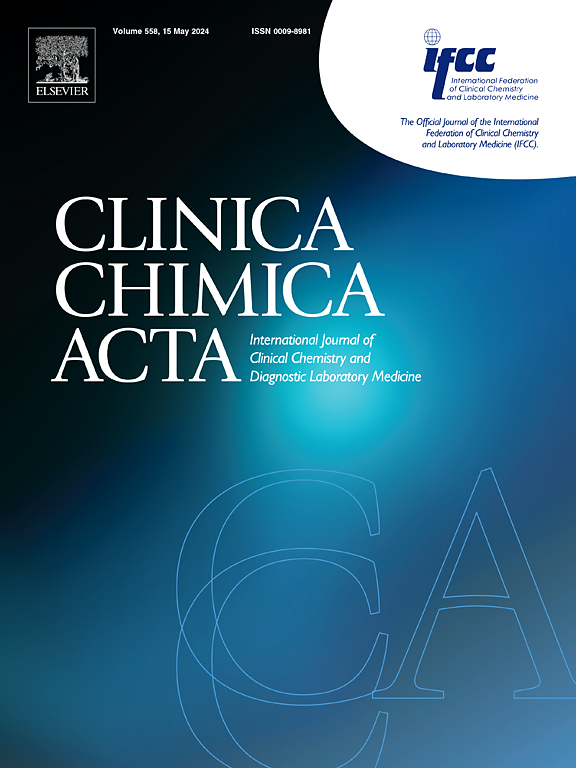Graphene-based biosensors for PSA
IF 2.9
3区 医学
Q2 MEDICAL LABORATORY TECHNOLOGY
引用次数: 0
Abstract
Prostate cancer is a leading cause of cancer-related mortality among men worldwide. Early and accurate detection is critical for effective treatment and improved patient outcomes. Although prostate-specific antigen (PSA) remains the primary biomarker for screening, conventional assays often lack the sensitivity and specificity required for reliable diagnostics. In this review, we evaluate the emerging role of graphene-based biosensors in PSA detection and their potential to transform prostate cancer diagnostics. Graphene’s exceptional properties including a high surface-to-volume ratio and outstanding electrical conductivity make it an ideal platform for biosensing applications. We classify graphene-based sensors into three categories: electrochemical sensors, field-effect transistors (FETs), and fluorescence-based sensors, and discuss the mechanisms by which each detects PSA. Strategies for integrating graphene with other nanomaterials to enhance analytical performance are highlighted. We also assess the clinical feasibility of these platforms, emphasizing their rapid response times, high accuracy, and minimally invasive operation. Finally, we discuss current challenges and future perspectives for translating graphene-based PSA biosensors from laboratory research to routine clinical practice.
用于PSA的石墨烯生物传感器。
前列腺癌是全球男性癌症相关死亡的主要原因。早期和准确的检测对于有效治疗和改善患者预后至关重要。尽管前列腺特异性抗原(PSA)仍然是筛查的主要生物标志物,但传统的检测方法往往缺乏可靠诊断所需的敏感性和特异性。在这篇综述中,我们评估了基于石墨烯的生物传感器在PSA检测中的新兴作用及其改变前列腺癌诊断的潜力。石墨烯的特殊性能,包括高表面体积比和出色的导电性,使其成为生物传感应用的理想平台。我们将基于石墨烯的传感器分为三类:电化学传感器、场效应晶体管(fet)和基于荧光的传感器,并讨论了每种传感器检测PSA的机制。强调了将石墨烯与其他纳米材料集成以提高分析性能的策略。我们还评估了这些平台的临床可行性,强调其快速反应时间,高精度和微创操作。最后,我们讨论了将基于石墨烯的PSA生物传感器从实验室研究转化为常规临床实践的当前挑战和未来前景。
本文章由计算机程序翻译,如有差异,请以英文原文为准。
求助全文
约1分钟内获得全文
求助全文
来源期刊

Clinica Chimica Acta
医学-医学实验技术
CiteScore
10.10
自引率
2.00%
发文量
1268
审稿时长
23 days
期刊介绍:
The Official Journal of the International Federation of Clinical Chemistry and Laboratory Medicine (IFCC)
Clinica Chimica Acta is a high-quality journal which publishes original Research Communications in the field of clinical chemistry and laboratory medicine, defined as the diagnostic application of chemistry, biochemistry, immunochemistry, biochemical aspects of hematology, toxicology, and molecular biology to the study of human disease in body fluids and cells.
The objective of the journal is to publish novel information leading to a better understanding of biological mechanisms of human diseases, their prevention, diagnosis, and patient management. Reports of an applied clinical character are also welcome. Papers concerned with normal metabolic processes or with constituents of normal cells or body fluids, such as reports of experimental or clinical studies in animals, are only considered when they are clearly and directly relevant to human disease. Evaluation of commercial products have a low priority for publication, unless they are novel or represent a technological breakthrough. Studies dealing with effects of drugs and natural products and studies dealing with the redox status in various diseases are not within the journal''s scope. Development and evaluation of novel analytical methodologies where applicable to diagnostic clinical chemistry and laboratory medicine, including point-of-care testing, and topics on laboratory management and informatics will also be considered. Studies focused on emerging diagnostic technologies and (big) data analysis procedures including digitalization, mobile Health, and artificial Intelligence applied to Laboratory Medicine are also of interest.
 求助内容:
求助内容: 应助结果提醒方式:
应助结果提醒方式:


